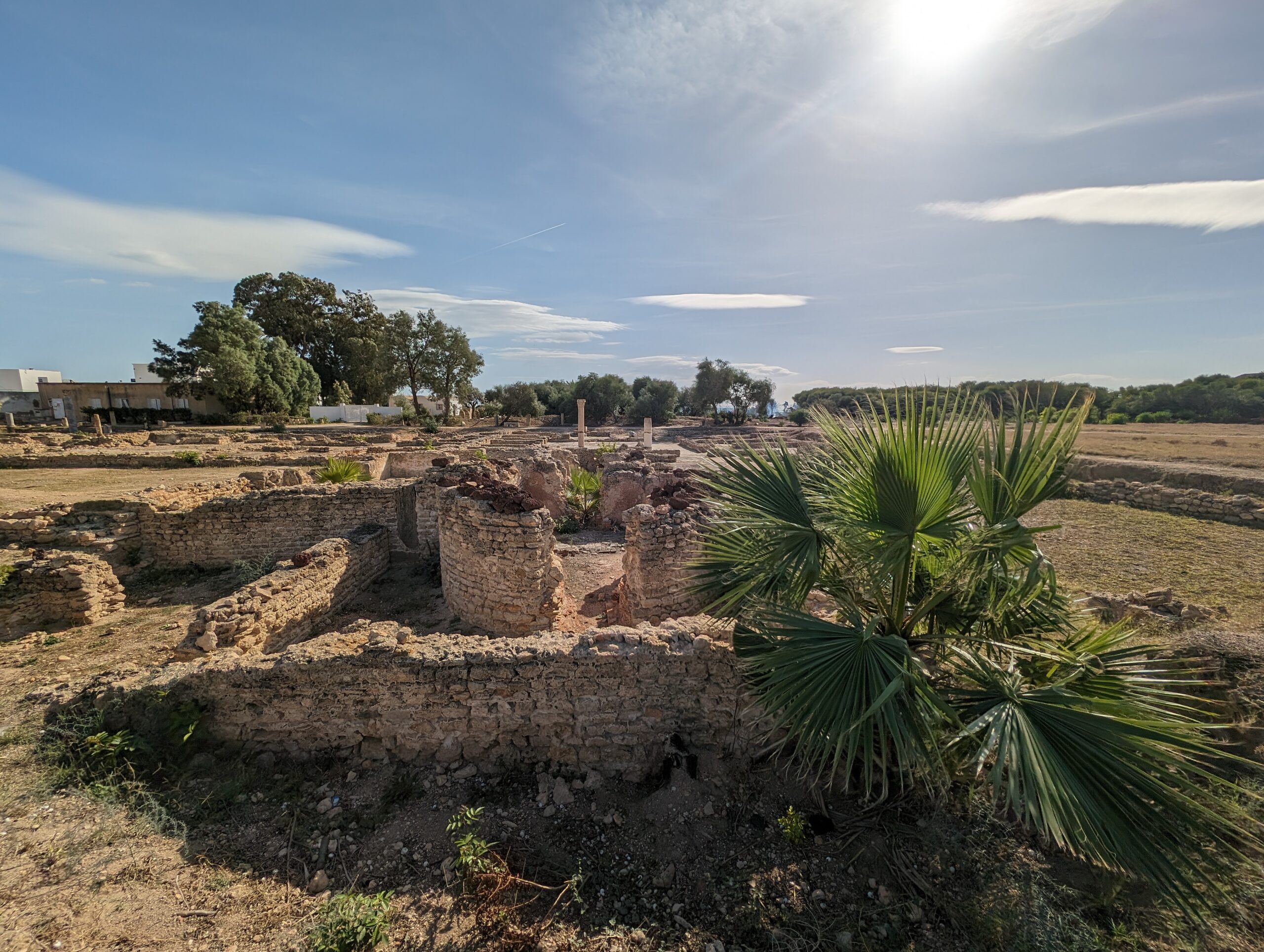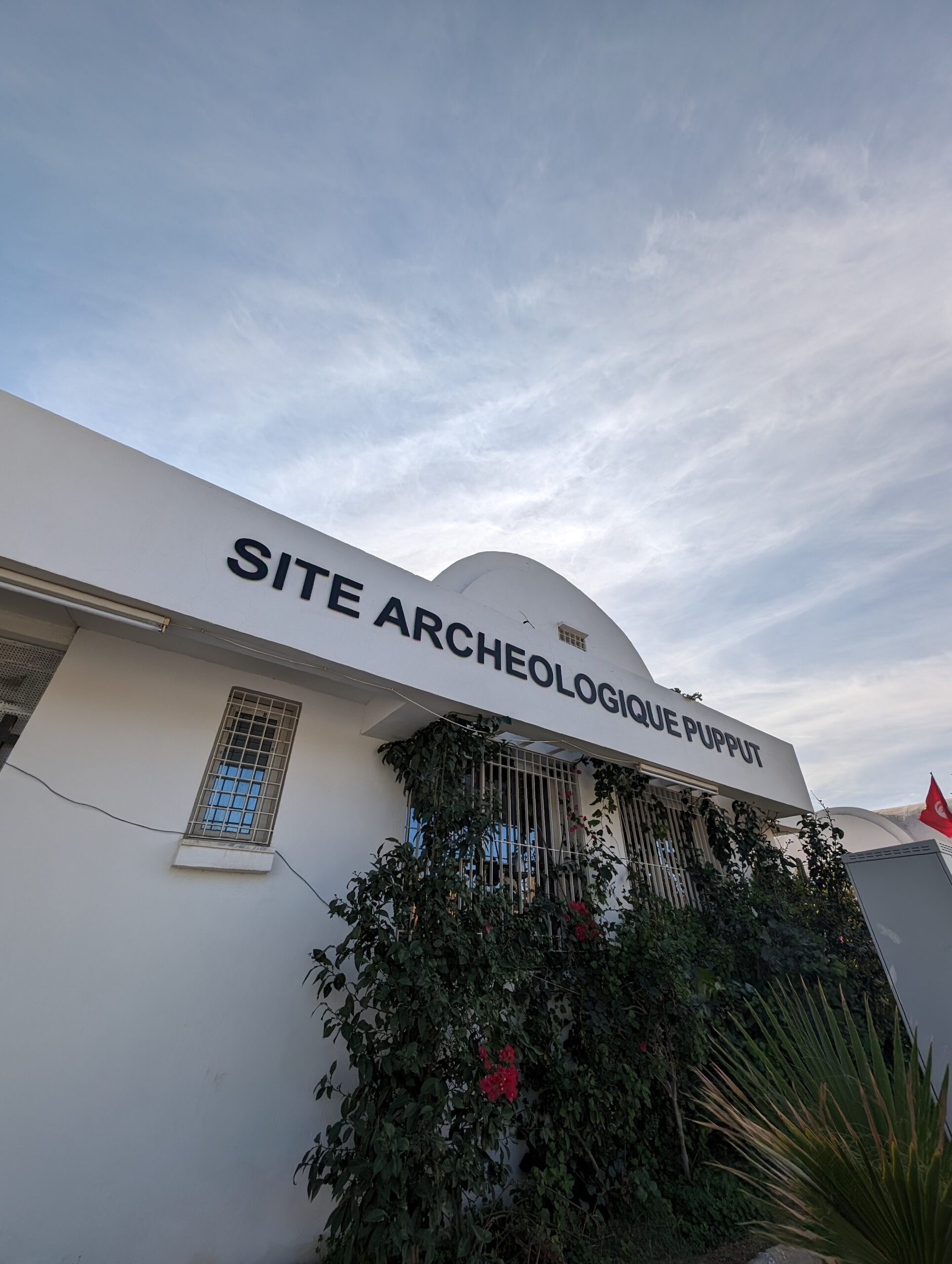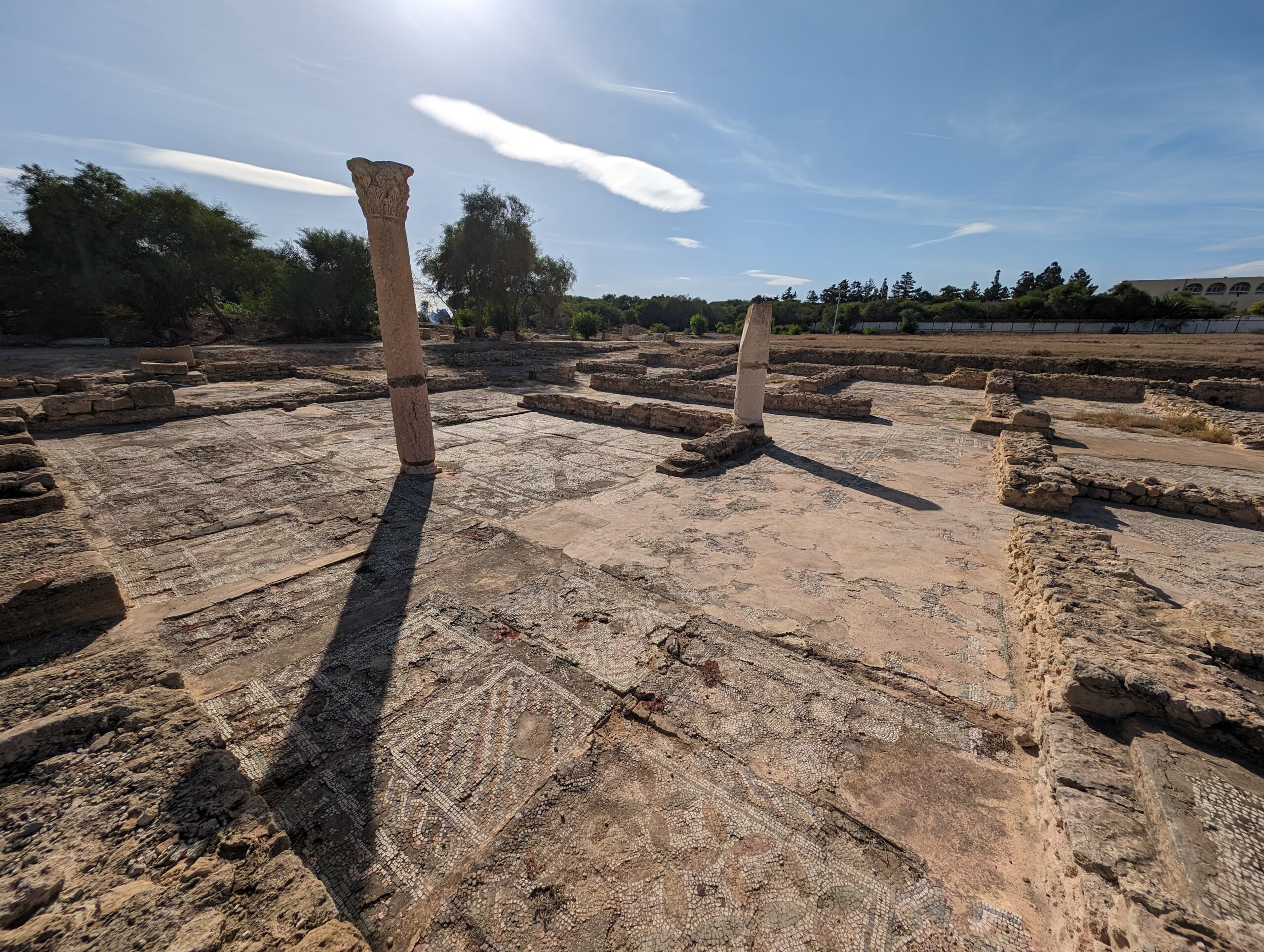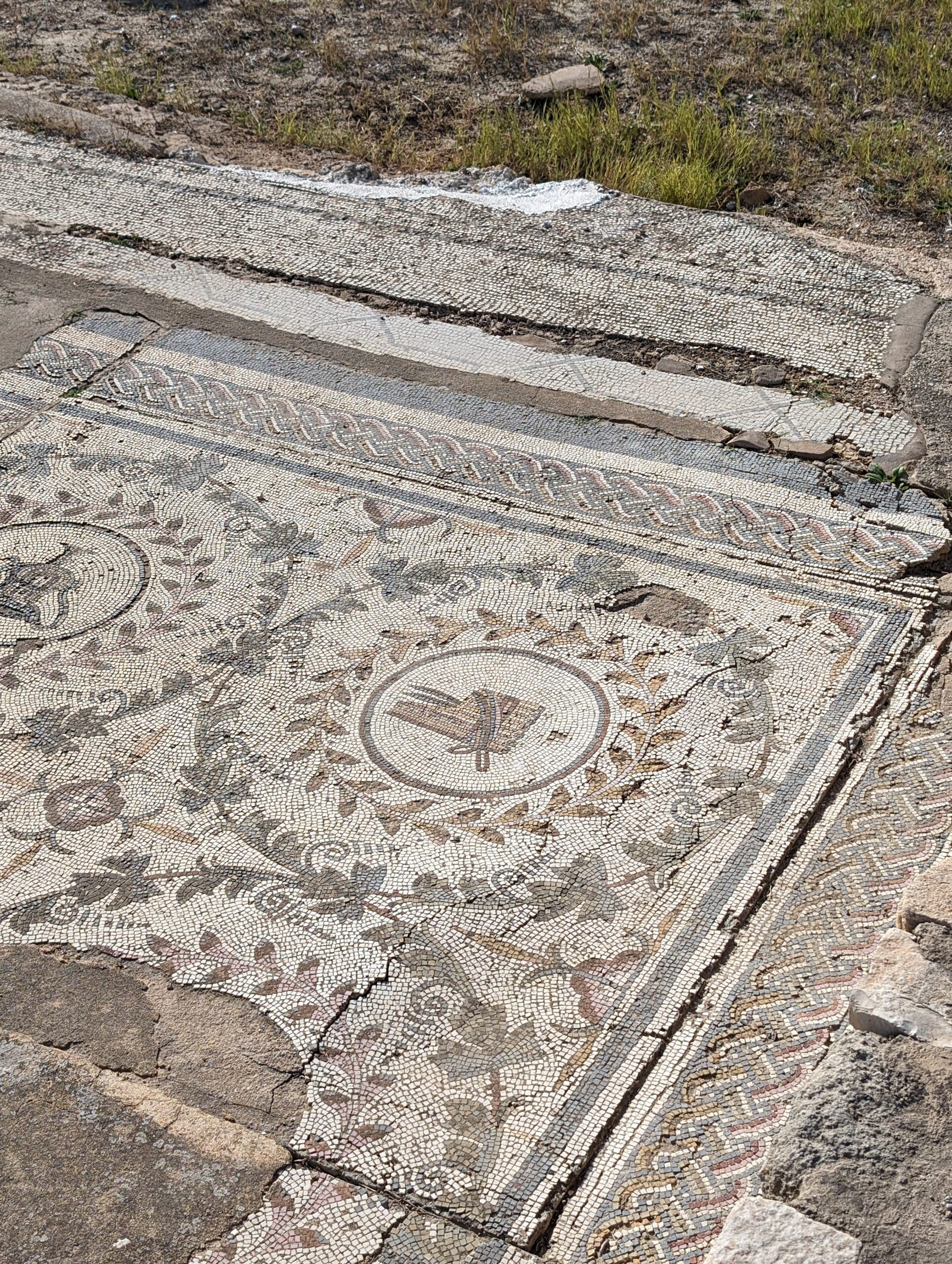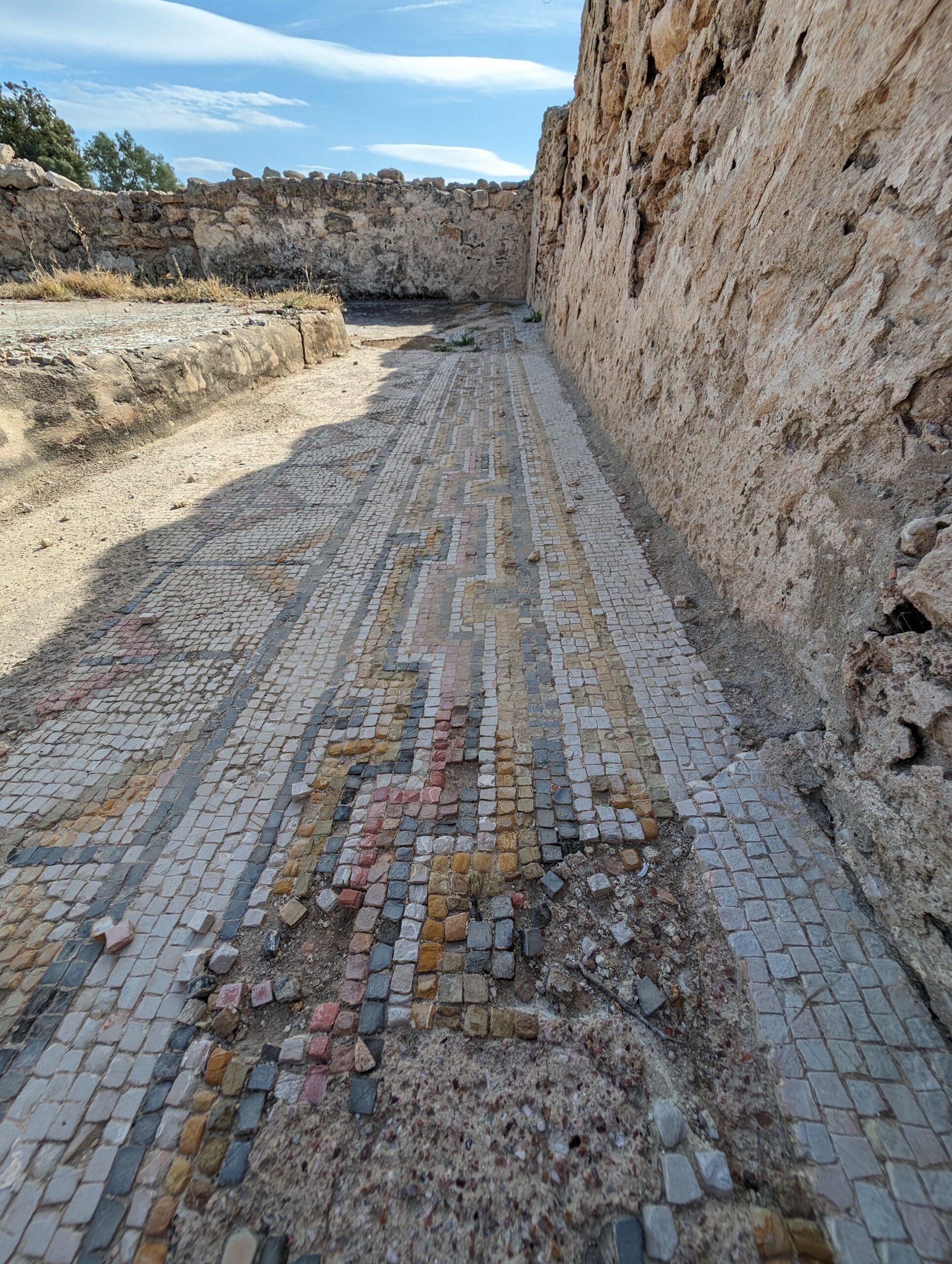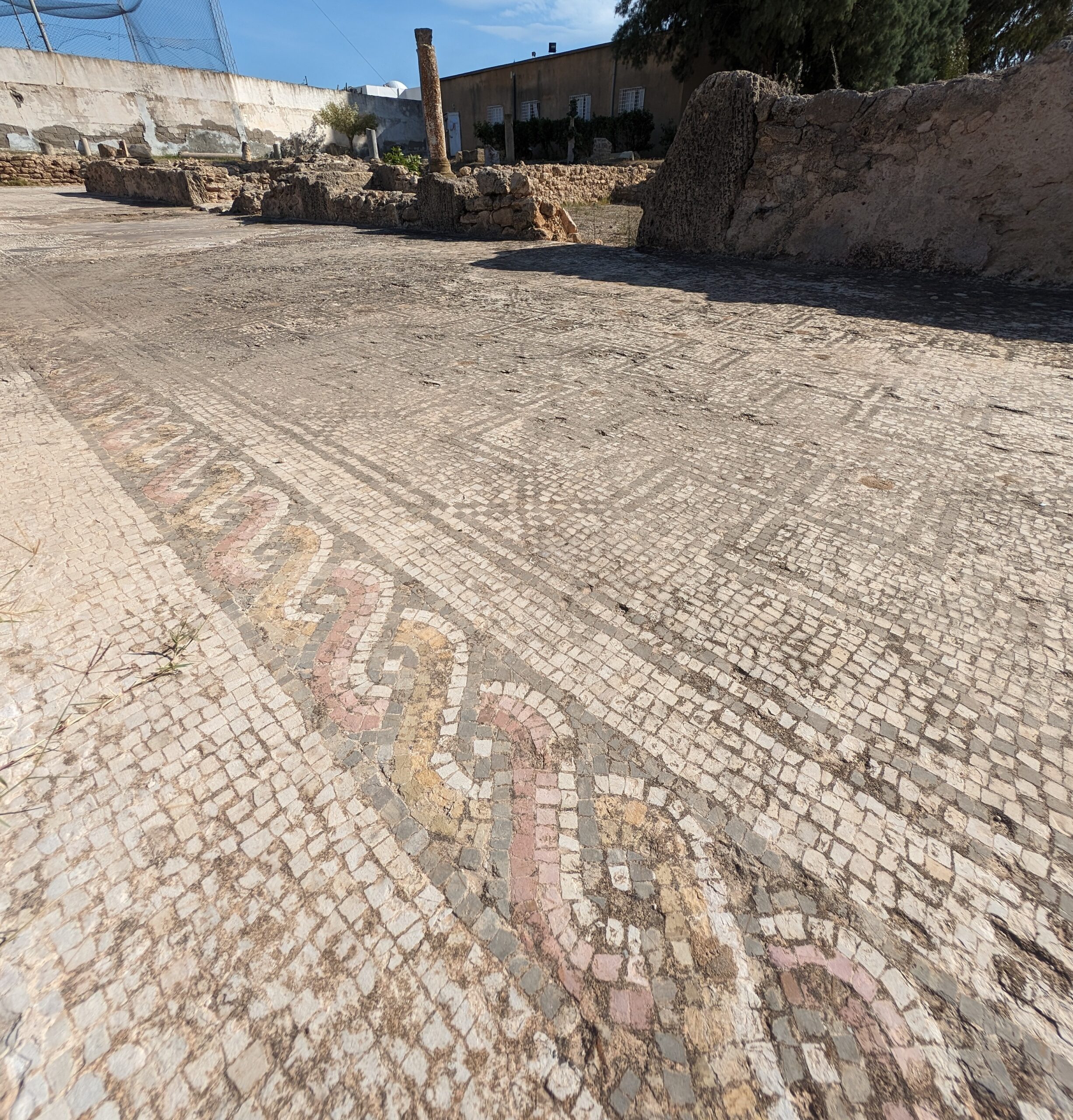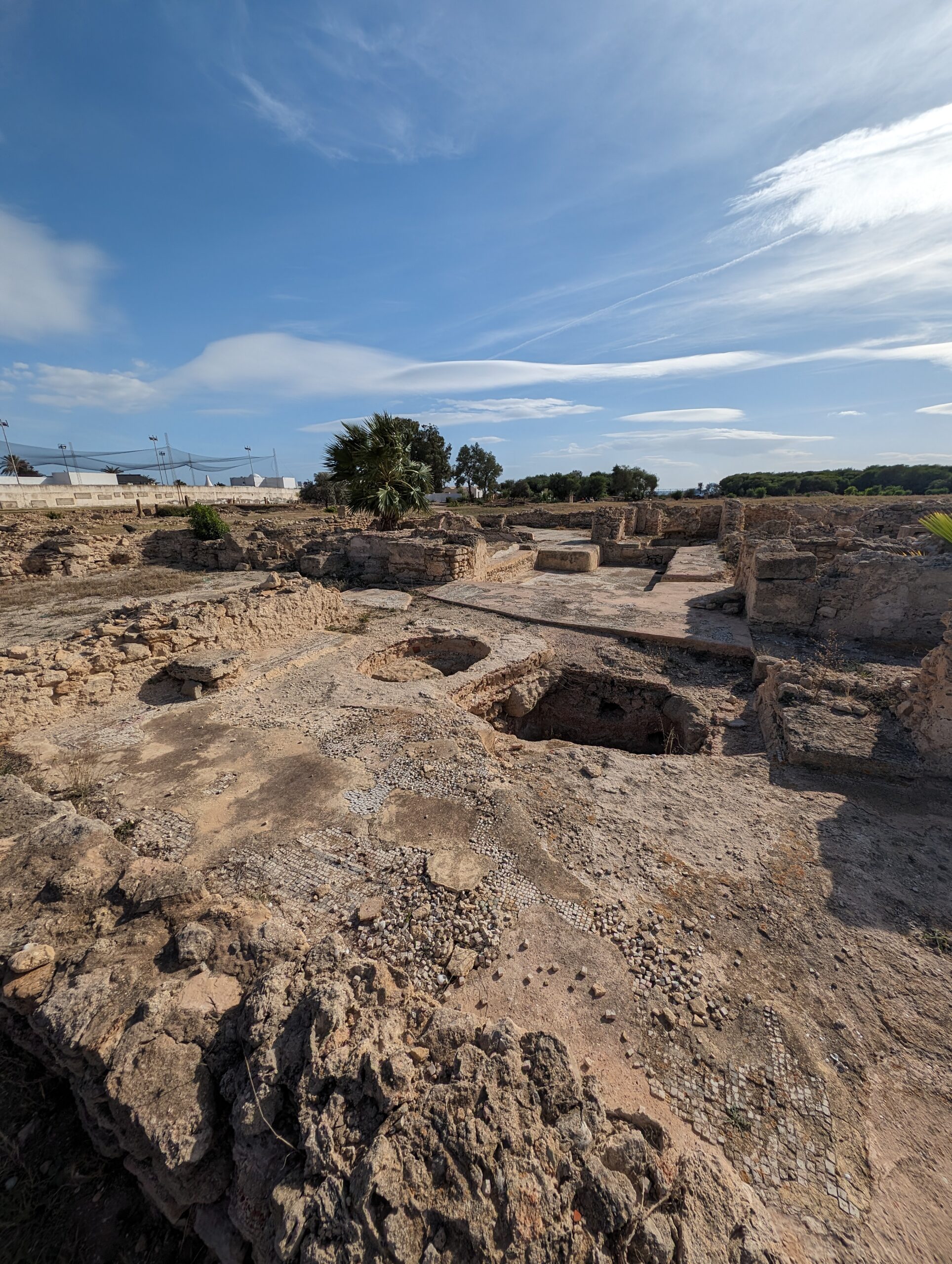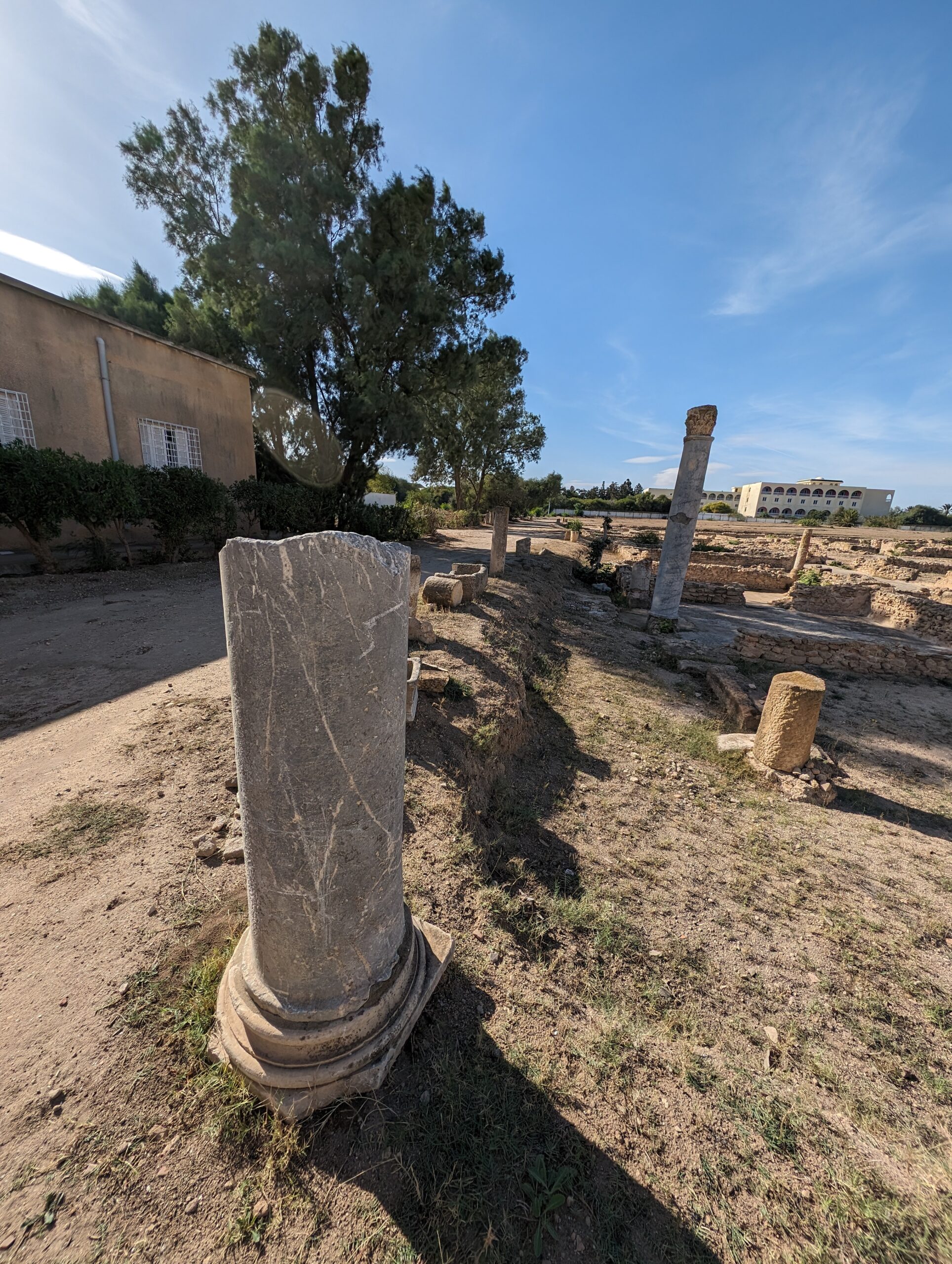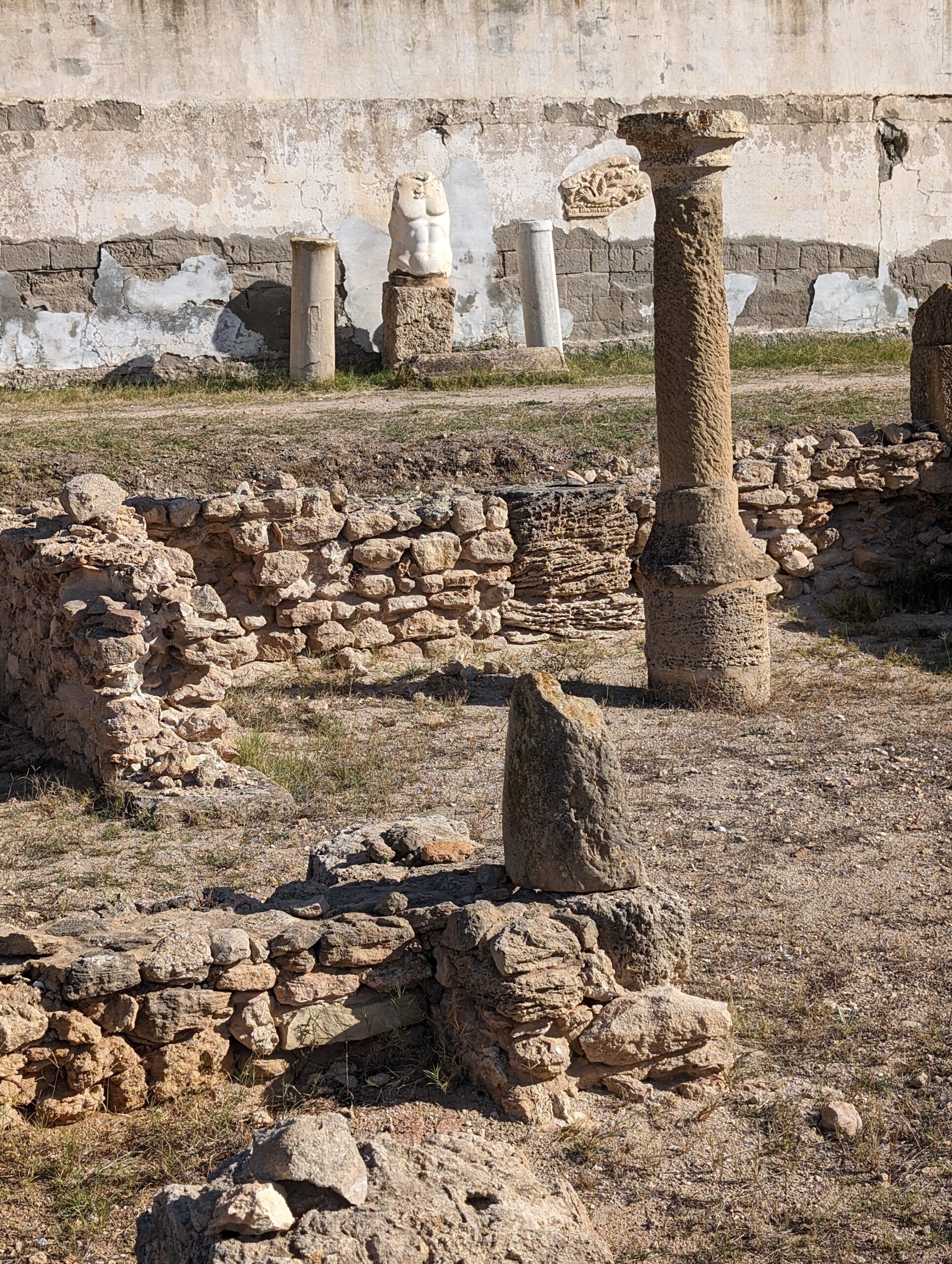Yasmine Hammamet / Tunesia
The “Site archéologique de Pupput” is located in Yasmine Hammamet (Souk al Abiadh) in the touristic zone and you are able to enter it from the side facing away from the sea through the Café Pupput, which offers good coffee and cakes. The entrance fee is currently 5 TND (approximately 1,50 EUR), which is really low for a site of this size and (in my humble opinion) should be increased for tourists to at least 3 EUR to gather more money for the further preservation of the site, because it’s absolutely worth it.
The remains of the roman city we see here is just a very small fraction of the former roman city. During the time of Emperor Antonius Pius (in reign from 138 – 161 AD), who built the therme of Carthage, Pupput was still just a small settlement with no importance.
Under the reign of Emperor Commodus from 180 to 192 AD the settlement has been declared a Colonia (roman city) and to be precise it has been named “Colonia Aurelia Commoda pia, Felix, Augusta Pupput“. The force behind this development was a roman legal advisor Salvianus Julianus who was the patron to this small area and his “cursus honorum”, which is the course and a summary of the career of a roman citizen were found as engravings on a stone in Pupput.
Back in 1936 french Louis Poinssot in the “Atlas historique, géographique, économique et touristique” still described the area of Pupput as “…very extensive ruins. Capitol. Small temple of goddesses. Theater. Amphitheatre. Baths. Several private cisterns. Aqueduct. Wells. Byzantine citadel. Dam on the Oued el-Khanga. Bridge over the Oued Moussa”, but due to the aggressive and anarchic development of tourism in the region most of it is lost or burried under the hotel areas now and it was almost forgotten until around 1960 during the further touristic development several excavations were carried out and these thermal baths, several residences, a Christian basilica and a necropolis were uncovered.
Today’s area of the archaeological site is around 2 ha (20000 m²) large and shows several buildings (illustrations and photos will follow lateron during my excursion to Pupput in late november 2024), but here is a short overview already:
The house with a figured peristyle
This house located to the north is easily recognized by the columns in the central inner garden that shows a nice mosaic around the pillars. In the north the house had a small thermal complex and this dwelling can be dated to the 5th century AD. Dating of houses with mosaics are also often possible by the motifs shown, as they were heavily influenced by fashion movements.
The Triclinium House
This house with a figured peristyle that features a colonnade and a basin. The dining room (Triclinium) is paved with a black and white mosaic with hexagons, octagons and suqares, which makes it easy to identify for the visitor. It also shows a room that has been greatly decorated with wine leaves, kraters, masks and syrinxes with circles in the background. This building dates to a time between the 2nd to 3rd century AD.
The Satyr and the Nymph House
This house has been paved with a polychrome geometric mosaic and a figurative painting shows a Satyr that frightens a Nymph.
The Thermal Baths
The thermal baths have a trifoliate palaestra with an amazing mosaic with red and white cubes and a frigidarium with two basins are still visible. Also the heated rooms that were connected with the frigidarium by hypocausts can still be seen. This building dates back to the 4th century AD.
Church Mosaic Remains
The what’s nowadays called “Pupput Church” has been exavated in 1965, but unfortunately a hotel has been built over it afterwards, but some of the mosaics that have been saved can be seen on the eastern wall to the hotel.
Surroundings
The archaeological site of Pupput is located between two hotels (Hotel Hawaii Beach Club and Samira Club Hammamet) and a short walk away there is the former excavation site that shows the roman necropolis. It’s fenced off, but you can have a look from the outside.
Current State
The site is in relatively good condition, but almost no informations are available for visitors. There is a staff member that is actively restoring and taking care of the mosaics and he is truely doing an awesome job. The freshly restored mosaics and also the ones that have been restored some time back in the past are left without protection from the sun, so a roof would help some of the mosaics a lot. Especially the church mosaics preserved and put aside to the eastern wall facing the hotel are falling apart from year to year. The site itself has overall been pretty clean when I visited it last time.
Location
SOURCES / REFERENCES
- Tunisie – Atlas historique géographique économique touristique, 1936
CHANGELOG
2024-10-23: Added first photos.
2024-10-23: Added closer information and descriptions on the site.
2024-10-21: Creation of subpage (QRcode-ID 2) for this archaeological site.
Help me to do more…
You like my work and want to support me to do more for this specific site or be able to support more archaeological sites like this?

